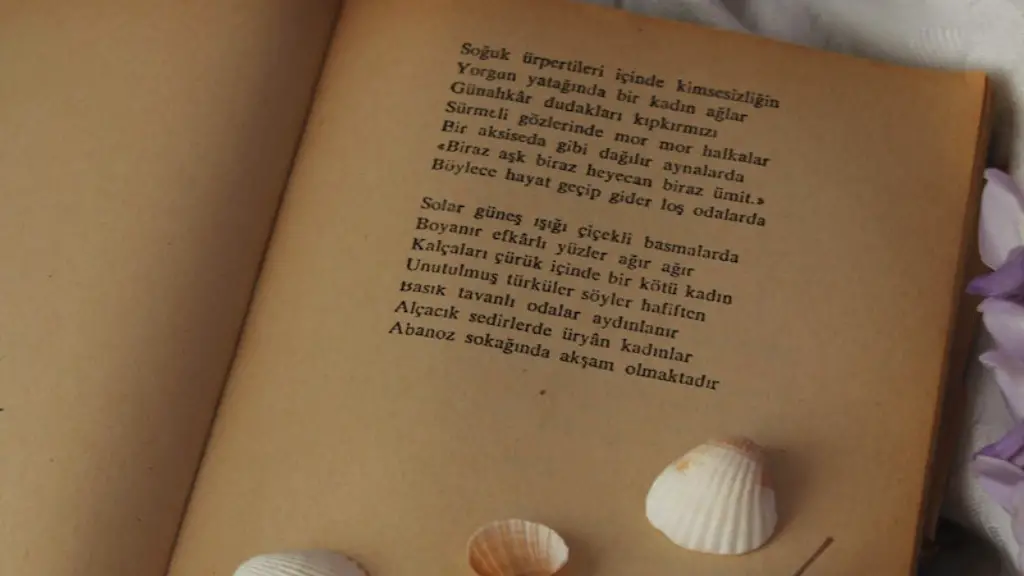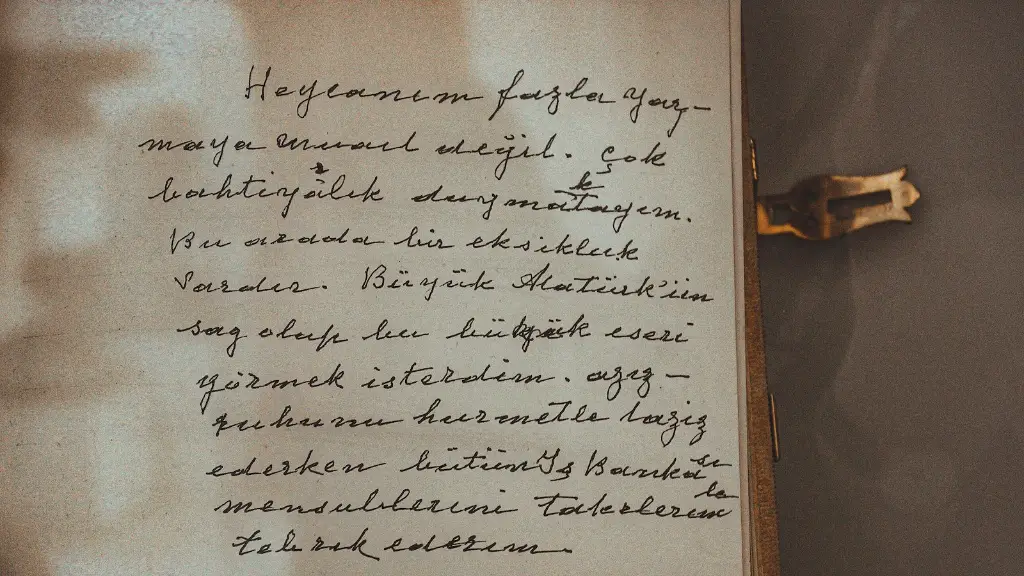Oscar Wilde’s novel ‘The Picture of Dorian Gray’ is one of the great works of English literature. Set in late nineteenth century London, it tells the story of a man who, unwilling to accept the consequences of his own actions and behaviour, takes a seemingly innocent vow to retain the beauty of his face and figure forever, no matter what he does or suffers personally. It is a tale of moral corruption and moral redemption, and has been acclaimed for its powerful themes and its use of contemporary drawing-room comedy. The novel was an immediate success upon its release in 1890, and has been adapted several times for stage and screen.
‘The Picture of Dorian Gray’ contains many of the themes that would become characteristic of Wilde’s work, including the conflict between art and life, the seductive power of beauty, and the importance of pleasure in life. The novel includes some of the most memorable characters and situations in all of fiction, none more so than the central figure, Dorian Gray. His relationship with the artist Basil Hallward and the courtesan Sibyl Vane illustrate the complexity of Wilde’s characters and themes.
At its heart, ‘The Picture of Dorian Gray’ is a story about the consequences of one’s actions, and the danger of not living in accordance with one’s true nature. Wilde himself wrote that ‘All art is quite useless’, and the book is an exploration of this idea. Through the characters of Dorian, Basil and Sibyl, Wilde lays out the temptations of beauty, art and pleasure, and the sometimes-dire consequences when these temptations are not resisted. Throughout the novel, Wilde’s wit and humor, sometimes cutting and often understated, shines through.
The novel has become a touchstone of high culture, inspiring films and television adaptations, musicals, and countless essays and analyses. It has had a huge impact on our culture, being cited as an influence by artists, authors, and directors, including T.S. Eliot, David Bowie, and Alfred Hitchcock. Its themes of beauty, pleasure and moral corruption remain as relevant today as when it was first published over a century ago.
The Picture of Dorian Gray is a timeless classic of English literature that continues to be read and enjoyed by generations of readers. Its depiction of beauty, pleasure and moral corruption remain as relevant today as ever, and its portrayal of characters and settings are as memorable and powerful as they were when the book was first published in 1890.
The Language of Picture of Dorian Gray
Oscar Wilde’s exquisite language in The Picture of Dorian Gray is one of the defining characteristics of the novel. His combination of wit, humor and poetic beauty paints a vivid portrait of late nineteenth century England and its culture. The combination of Wilde’s technical skill with his keen eye for detail and his keen ear for dialogue bring the characters and scenarios to life in a manner seldom seen in other works of literature.
Wilde’s use of classical allusions and poetic metaphors heighten the sense of elegance and intelligence of his storytelling. His language is marked by its economy, often using only a few words to express complex ideas. In many places, Wilde uses puns and other forms of wordplay to great effect, adding a sense of humor and lightness of tone to his work. The ideas and issues raised in The Picture of Dorian Gray are deep and profound, yet Wilde never presents them in a didactic manner, but instead with a sense of fun and playfulness.
The language of The Picture of Dorian Gray is a major reason for its enduring appeal and its appeal to modern readers. Wilde’s mixture of wit and wisdom, classical allusions and contemporary references, lend his work an immediacy and relevance that still speaks to us today. In particular, his use of humor helps to illuminate the most serious and complex of subjects, demonstrating Wilde’s unique ability to combine the tragic and the comic.
Themes in The Picture of Dorian Gray
The Picture of Dorian Gray by Oscar Wilde is a classic novel which explores many themes that remain relevant to this day. The most prominent themes in the novel are pleasure, corruption and redemption. Through the character of Dorian Gray, Wilde explores the idea of how pleasure corrupts and the desire to attain eternal beauty can lead to moral and spiritual ruin. The novel also deals with topics of art and beauty, social hypocrisy and the dangers of vanity. All of these themes form the backbone of Wilde’s tantalizing exploration of self-destruction and redemption.
The theme of pleasure is prominent in The Picture of Dorian Gray and encompasses the idea of both moral and physical indulgence. Dorian’s decision to seek unlimited pleasure in the search for eternal beauty leads to the corruption of his soul, with the immoral acts he commits, and the corruption of his body, involving his physical appearance. The concept of pleasure and its consequences is explored in the book as Dorian learns that sometimes pleasure must be tempered with responsibility and restraint, lest it leads to self-destruction.
The theme of art and beauty is another important aspect of The Picture of Dorian Gray. The relationship between art, beauty and mortality is one of the central points of the novel, as Dorian’s portrait stands in for his physical appearance, forever fixed in time and beyond the grasp of mortality. The question of art as a reflection of life is raised as Dorian’s life unfolds and his actions begin to take effect on his portrait. Through this theme, Wilde explores the power of art to capture the essence of a person and how art can be used to conceal aspects of a person’s life.
Finally, the theme of vanity and hypocrisy is explored in The Picture of Dorian Gray. Throughout the novel, Wilde emphasizes how vanity and hypocrisy can be hindrances to self knowledge. Dorian’s vanity and obsession with his own physical beauty prevent him from developing as a person and he alienates himself from the people who could in fact help him. Dorian’s pursuit of pleasure without responsibility ultimately leads to his downfall, a message Wilde portrays as an example of life’s greatest lesson.
The Historical Setting of The Picture of Dorian Gray
Oscar Wilde’s The Picture of Dorian Gray is set in late Victorian England, a time of great social and political change. In particular, the novel explores the ‘Darwinian Revolution’, as British social life moved towards greater acceptance of hedonism, materialism and individualism. British society was also deeply divided, with sharp distinctions between the upper classes and the lower classes.
Wilde’s focus on the decadence of the upper classes is a defining aspect of the novel. He captures the excesses of the privileged few and their ability to pursue pleasure without consequences. In contrast to the upper classes, the lower classes in The Picture of Dorian Gray are either absent or presented as objects of disgust, with Wilde suggesting that piety and morality were only necessary for the poor.
During this period, homosexuality was both criminalized and taboo, a fact which makes Wilde’s work even more remarkable. Whilst the relationship between Dorian and Basil is not openly acknowledged, its presence provides a powerful statement reflecting the conflict between Wilde’s personal beliefs and the harshness of his social reality.
The period in which The Picture of Dorian Gray was written provides a rich backdrop for Wilde’s moral exploration of the consequences of pleasure, vanity and moral corruption. In the Victorian period, these three themes were closely linked and it was in the middle of this maelstrom of social and political upheaval that Wilde composed his masterpiece.
Style and Form of The Picture of Dorian Gray
The Picture of Dorian Gray is marked by Oscar Wilde’s distinctive literary style. The novel’s structure follows the conventions of a Victorian novel, comprised of chapters that move smoothly from one scene to the next with well-timed comedic asides. While the novel follows a traditional structure, it is Wilde’s creative use of language that sets his work apart.
Wilde’s use of wit and humor serve to underline the dramatic action. His dialogue is filled with satire and irony which helps to bring out the complexities of the characters and the themes of the novel. Wilde often frames the characters’ conversations with sly asides, which gives the proceedings a sense of playfulness.
The novel includes four main characters – Dorian, Lord Henry, Basil, and Sibyl. All four characters represent different aspects of Victorian life, and each is presented with a unique voice. Dorian is full of wit and elegance, Lord Henry is cynical and biting, Basil is honest and sincere, and Sibyl is a representation of innocence and purity. Through the use of distinct and powerful characters, Wilde is able to reflect a variety of Victorian issues.
The Picture of Dorian Gray is an outstanding example of Wildean wit and humor and is considered one of his greatest works. His use of characters, language, and structure combine to create a comic yet meaningful tale, one which serves as both an examination of Victorian society and an exploration of Wilde’s own personal beliefs. The novel’s exploration of themes of pleasure, corruption, and redemption remain as pertinent today as ever, making Wilde’s classic an essential read that is sure to continue inspiring generations of readers.





